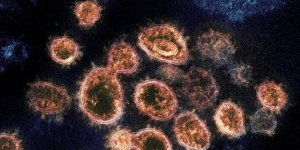| News / Science News |
Interactive model explores how different interventions affect COVID-19 spread
Millions of citizens around the world confined to their homes to help curb the spread of the novel coronavirus, COVID-19, have a pressing question on their minds: How long does social distancing need to last?

RN virus model. Photo: Wikimedia Commons
To explore this question and the consequences of lifting restrictions too early, Stanford University scientist Erin Mordecai and a team of researchers developed an interactive website that models the spread of COVID-19 over time.
It looks at different non-pharmaceutical interventions, such as social distancing and quarantine.
The goal, according to Mordecai, is to help users understand the benefits of "flattening the curve" and delaying the peak of the epidemic to stay below a fixed healthcare capacity to support patients.
"We wanted to start a larger conversation about how the long-term response might look," said Mordecai. "We're concerned about the potential for the disease to rapidly spread once we lift control measures."
What do the models do? They explore interventions that change over time. For example: What happens if we wait one week longer before issuing a shelter in place order?
How long do we expect a reduction in social contacts to be sustained before we start to see a decline in cases? How can we use adaptive strategies that actively turn off and on interventions as we track the number of hospitalized cases?
These models suggest that beginning interventions early -- before the epidemic has grown too large in a community -- is important.
It makes clear that if we impose social distancing for a short or medium time period -- several weeks to months -- and then lift restrictions altogether, we can expect to see a resurgence of disease transmission because many people will still be susceptible.
To avoid a resurgence of COVID-19, we need to apply multiple interventions over a long period of time -- 12 to 18 months or more -- until effective treatments and/or vaccines are widely available.
"It's important that everyone understand why governments are doing what they are to try to stop the spread of the coronavirus," says Sam Scheiner, a program director in NSF's Division of Environmental Biology.
"This interactive website is a great way for individuals to see how different decisions might affect that spread." (National Science Foundation)
YOU MAY ALSO LIKE





